 Introduction to Algorithms, Second EditionThomas H. Cormen, Charles E. Leiserson, Ronald L. Rivest, Clifford Stein Introduction to Algorithms, Second EditionThomas H. Cormen, Charles E. Leiserson, Ronald L. Rivest, Clifford Stein 4 If you had to buy just one text on algorithms, Introduction to Algorithms is a magnificent choice. The book begins by considering the mathematical foundations of the analysis of algorithms and maintains this mathematical rigor throughout the work. The tools developed in these opening sections are then applied to sorting, data structures, graphs, and a variety of selected algorithms including computational geometry, string algorithms, parallel models of computation, fast Fourier transforms (FFTs), and more.
This book's strength lies in its encyclopedic range, clear exposition, and powerful analysis. Pseudo-code explanation of the algorithms coupled with proof of their accuracy makes this book is a great resource on the basic tools used to analyze the performance of algorithms. 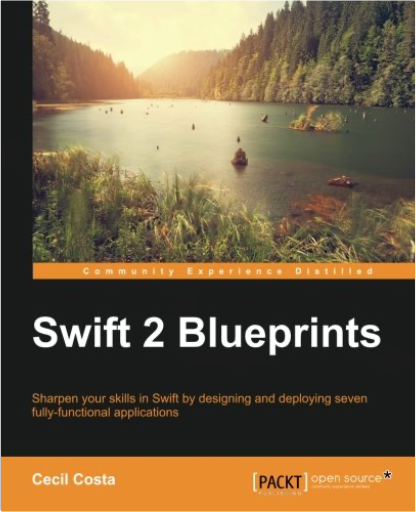 Swift 2 BlueprintsCecil Costa Swift 2 BlueprintsCecil Costa Sharpen your skills in Swift by designing and deploying seven fully functional applicationsAbout This Book Develop a variety of iOS-compatible applications that range from health and fitness to utilities using this project-based handbookDiscover ways to make the best use of the latest features in Swift to build on a wide array of applicationsFollow step-by-step instructions to create Swift apps oriented for the real worldWho This Book Is For
If you are a competent iOS developer who wants to develop stunning applications with Swift, then this book is for you. Familiarity with Swift programming is assumed. What You Will Learn Get to grips with the basics of Xcode and Swift for application developmentCreate a Photo Sharing application to capture an image, edit it using different features and share it via social media.Develop applications using the WatchKit and exchange data between iPhone and the WatchUse advanced features such as SpriteKit to build a gameInstall third-party Swift frameworks to improvise on your application developmentDiscover how to simulate home automation with HomeKitBuild an application to monitor the user's weight, heart rate and the number of steps for Health Historic AnalysisManipulate media using AVFoundation framework to merge audio and video.In Detail
In this book, you will work through seven different projects to get you hands-on with developing amazing applications for iOS devices.
We start off with a project that teaches you how to build a utility app using Swift. Moving on, we cover the concepts behind developing an entertainment or social networking related application, for example, a small application that helps you to share images, audio, and video files from one device to another. You'll also be guided through create a city information app with customized table views, a reminder app for the Apple Watch, and a game app using SpriteKit.
By the end of this book, you will have the required skillset to develop various types of iOS applications with Swift that can run on different iOS devices. You will also be well versed with complex techniques that can be used to enhance the performance of your applications. Style and approach
This book takes a step-by-step approach to help you build apps from scratch and learn the methodology to develop real-time applications using Swift. 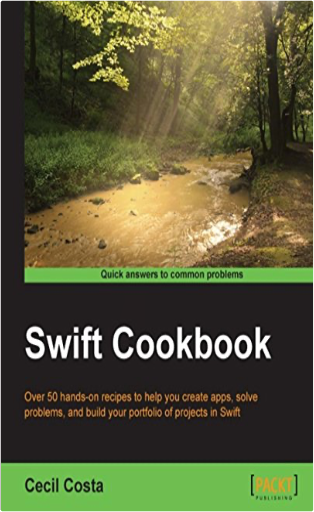 Swift CookbookCecil Costa Swift CookbookCecil Costa If you have been looking for a book to help you develop apps for iOS on native iOS platforms, this is the book that you've been looking for! This practical guide will supply you with the building blocks that you can turn to when conceptualizing and writing applications for iOS/OS X. You'll master Swift programming as you progress through the various recipes in this book.
Starting with recipes that use the basic features, you will move on to interesting and engaging recipes that will make use of the more complex features of Swift. You will learn how to make use of Swift's diverse features, from the way you can configure your projects to the usage of design patterns and different types of databases. Complete with tips and tricks on Xcode, this example-based guide will help you develop and debug faster.  The Zynq Book: Embedded Processing with the ARM Cortex-A9 on the Xilinx Zynq-7000 All Programmable SoCLouise H Crockett, Ross A Elliot, Martin A Enderwitz, Robert W Stewart The Zynq Book: Embedded Processing with the ARM Cortex-A9 on the Xilinx Zynq-7000 All Programmable SoCLouise H Crockett, Ross A Elliot, Martin A Enderwitz, Robert W Stewart This book is about the Zynq-7000 All Programmable System on Chip, the family of devices from Xilinx that combines an application-grade ARM Cortex-A9 processor with traditional FPGA logic fabric. Catering for both new and experienced readers, it covers fundamental issues in an accessible way, starting with a clear overview of the device architecture, and an introduction to the design tools and processes for developing a Zynq SoC. Later chapters progress to more advanced topics such as embedded systems development, IP block design and operating systems. Maintaining a 'real-world' perspective, the book also compares Zynq with other device alternatives, and considers end-user applications. The Zynq Book is accompanied by a set of practical tutorials hosted on a companion website. These tutorials will guide the reader through first steps with Zynq, following on to a complete, audio-based embedded systems design.  Rethinking the Internet of Things: A Scalable Approach to Connecting EverythingFrancis daCosta Rethinking the Internet of Things: A Scalable Approach to Connecting EverythingFrancis daCosta Over the next decade, most devices connected to the Internet will not be used by people in the familiar way that personal computers, tablets and smart phones are. Billions of interconnected devices will be monitoring the environment, transportation systems, factories, farms, forests, utilities, soil and weather conditions, oceans and resources.
Many of these sensors and actuators will be networked into autonomous sets, with much of the information being exchanged machine-to-machine directly and without human involvement. Machine-to-machine communications are typically terse. Most sensors and actuators will report or act upon small pieces of information - “chirps”. Burdening these devices with current network protocol stacks is inefficient, unnecessary and unduly increases their cost of ownership.
This must change. The architecture of the Internet of Things must evolve now by incorporating simpler protocols toward at the edges of the network, or remain forever inefficient. Rethinking the Internet of Things describes reasons why we must rethink current approaches to the Internet of Things. Appropriate architectures that will coexist with existing networking protocols are described in detail. An architecture comprised of integrator functions, propagator nodes, and end devices, along with their interactions, is explored. What youll learn Discusses the difference between the "normal" Internet and the Internet of Things.Describes a new architecture and its components in the "chirp" context.Explains the shortcomings of IP for IoT.Describes the anatomy of the IoT.Describes how to build a suitable network to maximize the amazing potential of the IoT.Who this book is for
Thought leaders, executives, architectural, standards and development leaders in the evolving IoT industry. Corporations and organizations whose commercial products could be adapted simply to be functioning devices on the IOT while saving billions of dollars in unnecessary costs or proprietary designs. Those who wish to capitalize on technology change and those interested in the Internet, its capabilities and the need to improve it.
Table of Contents Foreword
Preface
Chapter Goal: The reader will understand the new demands and opportunities of the Internet of Things (IoT). The preface introduces the idea of a new, simplified architectural approach that draws on nature.
Chapter 1: It's Different Out Here
Chapter Goal: Reader should understand the difference between traditional Internet networking and the Internet of Things. What are the unique characteristics of the IoT that demand a new architecture? Why traditional architectures such as IP are a poor fit. Characteristics of an IoT-optimized architecture.
Chapter 2: Anatomy of the Internet of Things
Chapter Goal: Reader will understand the underlying principles of the emerging IoT architecture. Fundamental concepts are: the division of networking complexity among different devices; the make-up of the "Chirp" and how they are propagated; distinctions between transport and functional topologies; the concept of neighborhoods or zones of interest.
Chapter 3: On the Edge
Chapter Goal: Reader will learn the principles and characteristics of the End Devices in the IoT and how these will often differ from our present understanding of the Smartphone, tablet, and laptop. How the minimal networking needs of many IoT devices dictate elements of the architecture.
Chapter 4: Building a Web of Things
Chapter Goal: Reader will learn the characteristics and functionality of the Propagator node in the IoT Architecture. Some communications principles are introduced which will be more fully explored in Chapter 6.
Chapter 5: Small Data, Big Data, and Human Interaction
Chapter Goal: Reader will understand the role of Integrator functions in the IoT, the point in the IoT where humans interact to gain information from IoT data and to set parameters and control end devices. An explanation of zones of interest and neighborhoods, with a discussion of incorporating "small data" from chirps into big data analysis.
Chapter 6: An Architecture for the Frontier
Chapter Goal: Reader will gain an understanding of the challenges inherent in a communications architecture for the massive scale of the IoT. Exploiting the opportunities inherent in a machine-to-machine environment, a much simpler architecture is described in detail that readily scales to the required scope. This chapter adds technical depth to ideas introduced in Chapters 3-5.
Chapter 7: IoT Examples and Applications
Chapter Goal: Reader will learn about current and emerging applications in the Internet of Things. Reference wile b made to new applications enabled by the simpler architecture described in this book that are difficult or not possible with traditional networking protocols.
Chapter 8: Blueprint to the Internet of Things
Chapter Goal: Exploring the steps to IoT deployment. Standards based versus ad hoc approaches, call for industry cooperation and consortia. Intermediate incremental steps to broader adoption. 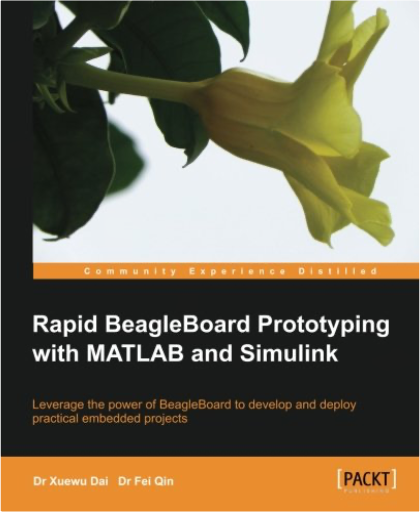 Rapid BeagleBoard Prototyping with MATLAB and SimulinkDr Xuewu Dai, Dr Fei Qin Rapid BeagleBoard Prototyping with MATLAB and SimulinkDr Xuewu Dai, Dr Fei Qin Leverage the power of BeagleBoard to develop and deploy practical embedded projects
OverviewDevelop and validate your own embedded audio/video applications rapidly with BeagleboardCreate embedded Linux applications on a pure Windows PCFull of illustrations, diagrams, and tips for rapid Beagleboard prototyping with clear, step-by-step instructions and hands-on examples
In Detail
As an open source embedded single-board computer with many standard interfaces, Beagleboard is ideal for building embedded audio/video systems to realize your practical ideas. The challenge is how to design and implement a good digital processing algorithm on Beagleboard quickly and easily without intensive low-level coding
Rapid BeagleBoard Prototyping with MATLAB and Simulink is a practical, hands-on guide providing you with a number of clear, step-by-step exercises which will help you take advantage of the power of Beagleboard and give you a good grounding in rapid prototyping techniques for your audio/video applications.
Rapid BeagleBoard Prototyping with MATLAB and Simulink looks at rapid prototyping and how to apply these techniques to your audio/video applications with Beagleboard quickly and painlessly without intensive manual low-level coding. It will take you through a number of clear, practical recipes that will help you to take advantage of both the Beagleboard hardware platform and Matlab/Simulink signal processing. We will also take a look at building S-function blocks that work as hardware drivers and interfaces for Matlab/Simulink. This gives you more freedom to explore the full range of advantages provided by Beagleboard.
By the end of this book, you will have a clear idea about Beagleboard and Matlab/Simulink rapid prototyping as well as how to develop voice recognition systems, motion detection systems with I/O access, and serial communication for your own applications such as a smart home.
What you will learn from this bookUnderstand rapid prototyping on a Windows host, including Matlab/Simulink code generation for BeagleboardSet up a cross-development environment on Windows for BeagleboardAccess Beagleboard’s GPIO pins and RS232 communication in Matlab and SimulinkDevelop your own S-function block in Simulink to access Beagleboard’s hardware devicesCreate an audio player and equalizer in Simulink, including audio file readingAdjust the parameters of your target system on-the-fly for the purpose of performance optimizationPenetrate into an infrared sensor in Matlab/Simulink for smart home applicationsBuild a video motion detection system for security applications
Approach
This book is a fast-paced guide with practical, hands-on recipes which will show you how to prototype Beagleboard-based audio/video applications using Matlab/Simlink and Sourcery Codebench on a Windows host.
Who this book is written for
Rapid BeagleBoard Prototyping with MATLAB and Simulink is great for students and academic researchers who have practical ideas and who want to build a proof-of-concept system on an embedded hardware platform quickly and efficiently. It is also useful for product design engineers who want to ratify their applications and reduce the time-to-market. It is assumed that you are familiar with Matlab/Simulink and have some basic knowledge of computer hardware. Experience in Linux is favoured but not necessary, as our software development is purely on a Windows host. 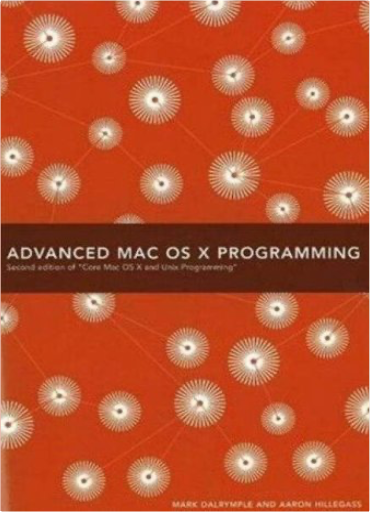 Advanced Mac OS X ProgrammingMark Dalrymple, Aaron Hillegass Advanced Mac OS X ProgrammingMark Dalrymple, Aaron Hillegass 4.5 There are several other books on programming for Mac OS X, but none of them comtain explanations of how to leverage the powerful underlying technologies. This book goes down to the real nitty-gritty of multi-threading, interprocess communication, networking, performance tuning, distributed objects, queues, Bonjour, authentication, the keychain, and directory services. The tools are also covered: gcc, gdb, subversion, Shark, and Saturn.  Learn Objective–C on the MacMark Dalrymple, Scott Knaster Learn Objective–C on the MacMark Dalrymple, Scott Knaster 4.5 Take your coding skills to the next level with this extensive guide to Objective–C, the native programming language for developing sophisticated software applications for Mac OS X. Objective–C is a powerful, object–oriented extension of C, making this book the perfect follow–up to Dave Mark’s best–selling Learn C on the Mac, Mac OS X Edition. Whether you’re an experienced C programmer or you’re coming from a different language such as C++ or Java, leading Mac experts Mark Dalrymple and Scott Knaster show you how to harness the powers of Objective–C in your applications! A complete course on the basics of Objective–C using Apple’s free Xcode toolsAn introduction to object–oriented programmingComprehensive coverage of inheritance, composition, object initialization, categories, protocols, memory management, and organizing source filesA brief tour of Cocoa’s Foundation framework and AppKitA helpful “learning curve” guide for non–C developers
What you’ll learn Learn Objective–C programming, the gateway to programming your Mac or iPhone.Write applications for the Mac OS X interface, the cleanest user–interface around.Understand variables and how to design your own data structures.Work with the file system.Connect to data sources and the Internet.
Who is this book for?
For anyone wanting to learn to program native applications in Mac OS X, including developers new to the Mac, developers new to Objective–C, or students entirely new to programming. |
 Introduction to Algorithms, Second EditionThomas H. Cormen, Charles E. Leiserson, Ronald L. Rivest, Clifford Stein
Introduction to Algorithms, Second EditionThomas H. Cormen, Charles E. Leiserson, Ronald L. Rivest, Clifford Stein  Swift 2 BlueprintsCecil Costa
Swift 2 BlueprintsCecil Costa  Swift CookbookCecil Costa
Swift CookbookCecil Costa  The Zynq Book: Embedded Processing with the ARM Cortex-A9 on the Xilinx Zynq-7000 All Programmable SoCLouise H Crockett, Ross A Elliot, Martin A Enderwitz, Robert W Stewart
The Zynq Book: Embedded Processing with the ARM Cortex-A9 on the Xilinx Zynq-7000 All Programmable SoCLouise H Crockett, Ross A Elliot, Martin A Enderwitz, Robert W Stewart  Rethinking the Internet of Things: A Scalable Approach to Connecting EverythingFrancis daCosta
Rethinking the Internet of Things: A Scalable Approach to Connecting EverythingFrancis daCosta  Rapid BeagleBoard Prototyping with MATLAB and SimulinkDr Xuewu Dai, Dr Fei Qin
Rapid BeagleBoard Prototyping with MATLAB and SimulinkDr Xuewu Dai, Dr Fei Qin  Advanced Mac OS X ProgrammingMark Dalrymple, Aaron Hillegass
Advanced Mac OS X ProgrammingMark Dalrymple, Aaron Hillegass  Learn Objective–C on the MacMark Dalrymple, Scott Knaster
Learn Objective–C on the MacMark Dalrymple, Scott Knaster 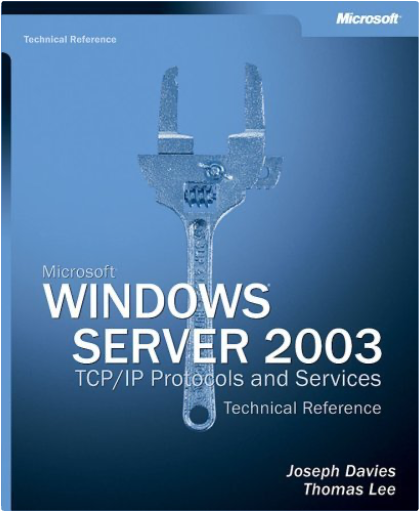 Microsoft Windows Server 2003 TCP/IP Protocols and Services Technical ReferenceJoseph Davies, Thomas Lee
Microsoft Windows Server 2003 TCP/IP Protocols and Services Technical ReferenceJoseph Davies, Thomas Lee  Made with Delicious Library
Made with Delicious Library


